-
Car Reviews
- All reviews
- Midsize SUVs
- Small cars
- Utes
- Small SUVs
- Large SUVs
- Large cars
- Sports SUVs
- Sports cars
- Vans
Latest reviews
- Car News
-
Car Comparisons
Latest comparisons
- Chasing Deals
Hyundai’s Ioniq 9 resists the EV trend of big figures and flashy style in favour of what matters for a family friendly seven-seater
If you’re after a zero-emissions seven-seater it’s highly likely that space, safety, practicality and range are on your priority list far above things like 0-100km/h acceleration, active aerodynamics and bucket seats. Which is why Hyundai’s freshly revealed Ioniq 9 should be of interest.
When it arrives in Australia in the second quarter of 2025, the three-variant lineup will offer choices of performance and equipment but all versions will have a big battery for long drives between charges, heaps of cabin space and a number of flexible seating configurations.
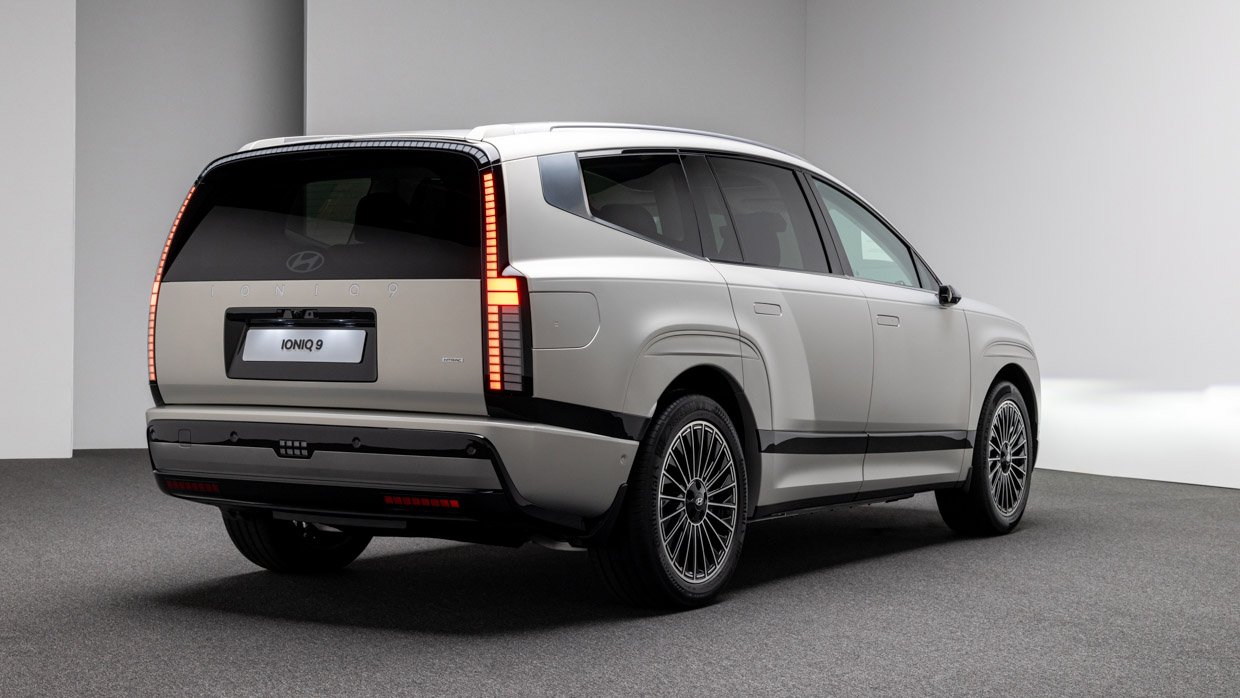
Pricing is yet to be finalised but we suspect a focus on the things that matter to families will make Ioniq’s third EV a firm favourite in the space-hero market.
Australian pricing and line-up are yet to be confirmed but it’s understood the Ioniq 9 will not differ greatly from the mechanically similar Kia EV9 which is already on sale from $97,000 up to $121,000 for the current range-topper.
Like its South Korean sister model, the Ioniq 9 is offered globally in three core variants – a Long-Range rear-wheel drive with a single drive motor, or a pair of dual-motor AWD versions that will be available in Long-Range or Performance versions.
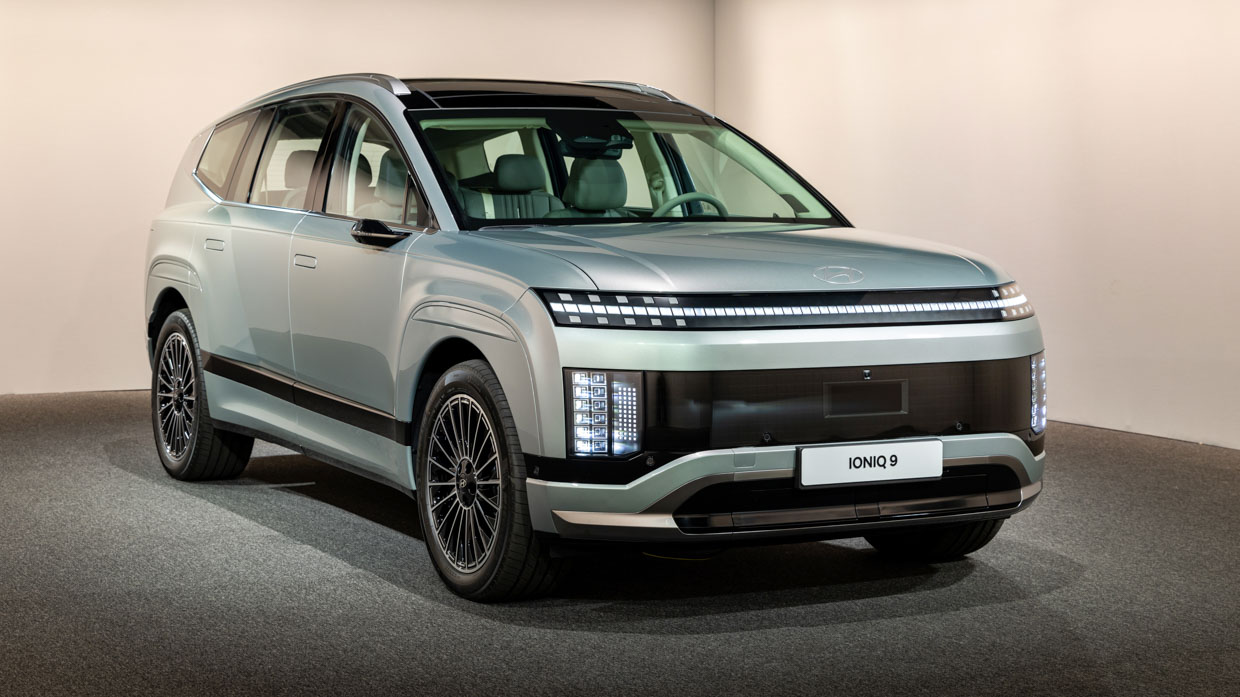
The Long-Range AWD has a 70kW/225Nm motor powering its front wheels and a 160kW/350Nm at the rear, while the Performance doubles down with the most potent unit fitted at both ends.
While there are many mechanical and technological similarities with the Kia EV9, one key difference lies in the Ioniq 9’s battery which, at 110kWh is 10kWh larger than the Kia’s.
Despite its large battery, the Ioniq 9 is capable of charging from 10 to 80 percent in just 24 minutes, claims Hyundai, made possible by the model’s 800-volt electrical architecture (400-volt is still the most commonplace among EVs).

Measuring more than 5.0 meters in length, about 2.0 meters wide and just less than 1.8 meters tall, the Ioniq 9 is about the same size as a Kia Carnival albeit about 100mm shorter in length. However, thanks to its battery powertrain, Hyundai says it fits a lot in along with a 3130mm wheelbase – the longest of any Hyundai to date.
Three rows of seating can accommodate up to seven occupants or six when optioned with the Relaxation Seats in the second row, and there are plenty of comfort features in all rows to keep everyone happy.
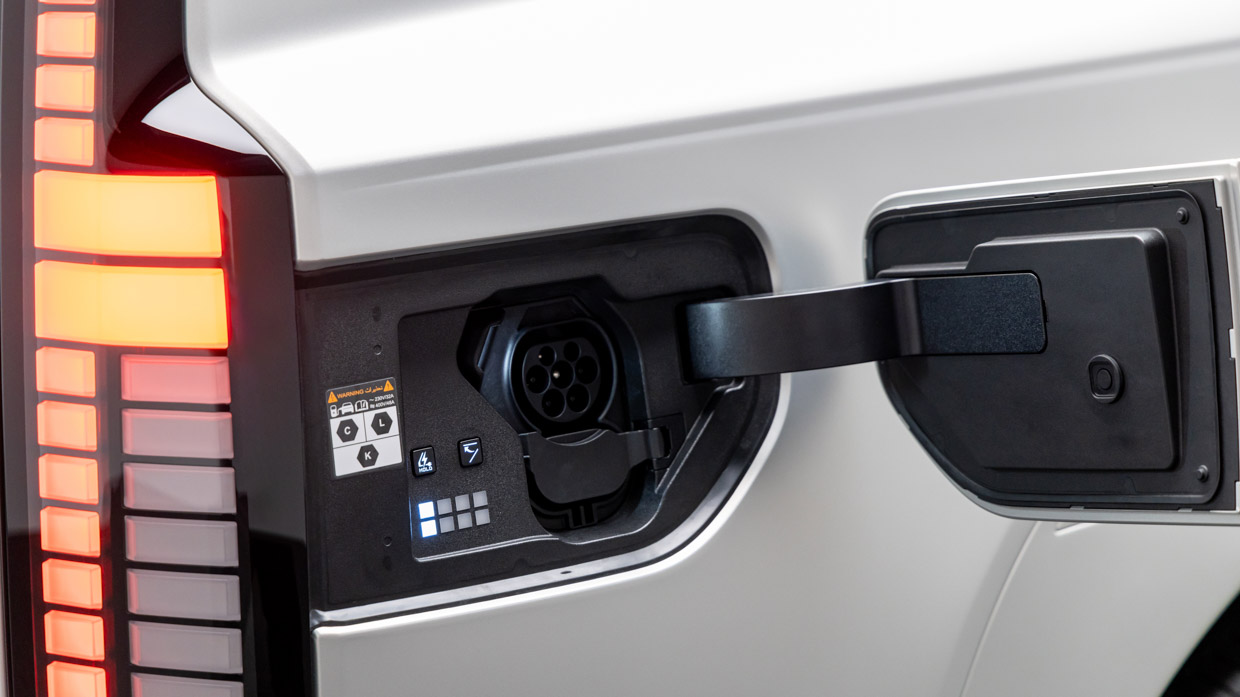
Thanks to an 800-volt electric architecture, the Ioniq 9 accepts up to 350kW charging meaning an 10-80 percent top up is possible in 24 minutes, claims its maker.
If you’re undecided on those looks perhaps knowing they dramatically contribute to an ultra-low drag co-efficient of 0.259Cd will help. This in turn enables improved energy efficiency with an estimated 19.4kWh/100km consumption depending on the combination of wheel size and drivetrain.
With a single 160kW motor at its disposal, the entry level Ioniq 9 does the 0-100km/h dash in 9.4 seconds but is the single-charge hero with up to 620km of range when fitted with the lowest-drag 19-inch wheels.
All-wheel drive versions don’t go as far but get you there quicker with the Long-Range and Performance Ioniq 9s accelerating from a standing start to 100km/h in just 6.7s and 5.2s respectively.
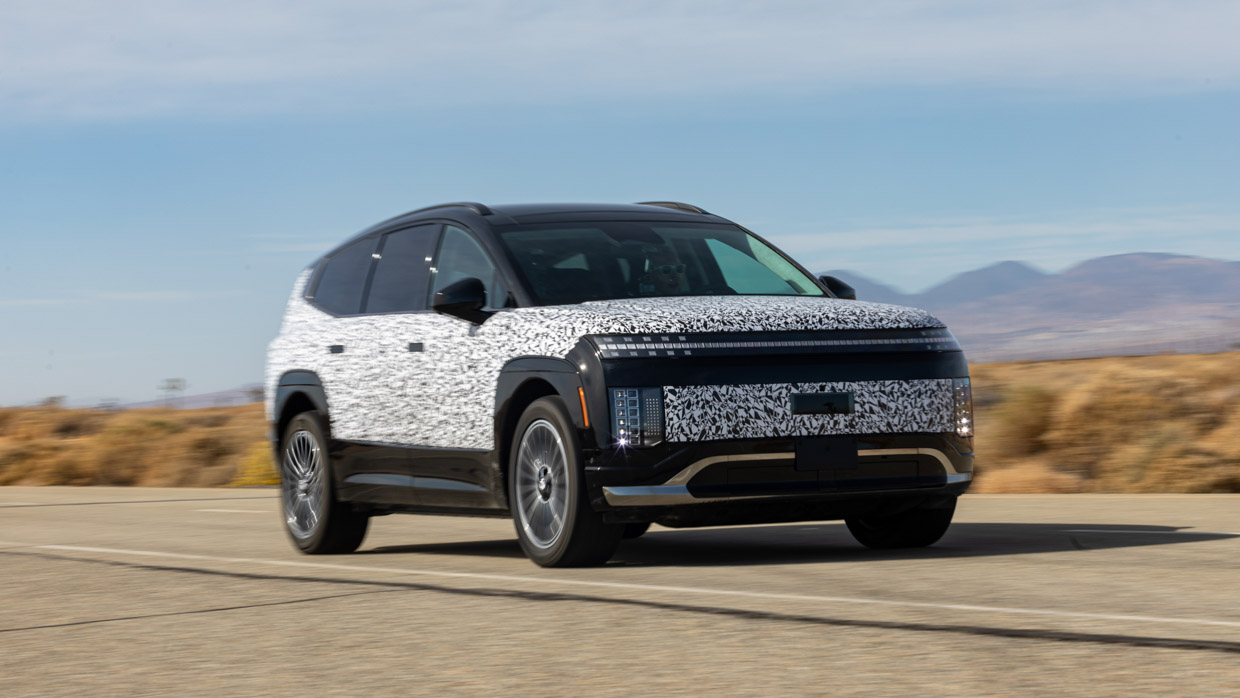
That means the newest Ioniq can’t quite match the Zeekr 009 fizzy family wagon for outright performance but beats it in range, price, and brand recognition, as well as offering a model that’s more geared toward to the school run rather than Nurburgring lap times.
To us, it also makes more sense than the confirmed full-phatt GT version of the Kia EV9, which will. Be fast in favour of the rest of the range’s range and efficiency.
In practice, the most potent Ioniq 9 has a surplus of performance and it’s very unlikely anyone piloting the range-topper will be left wanting for more acceleration.
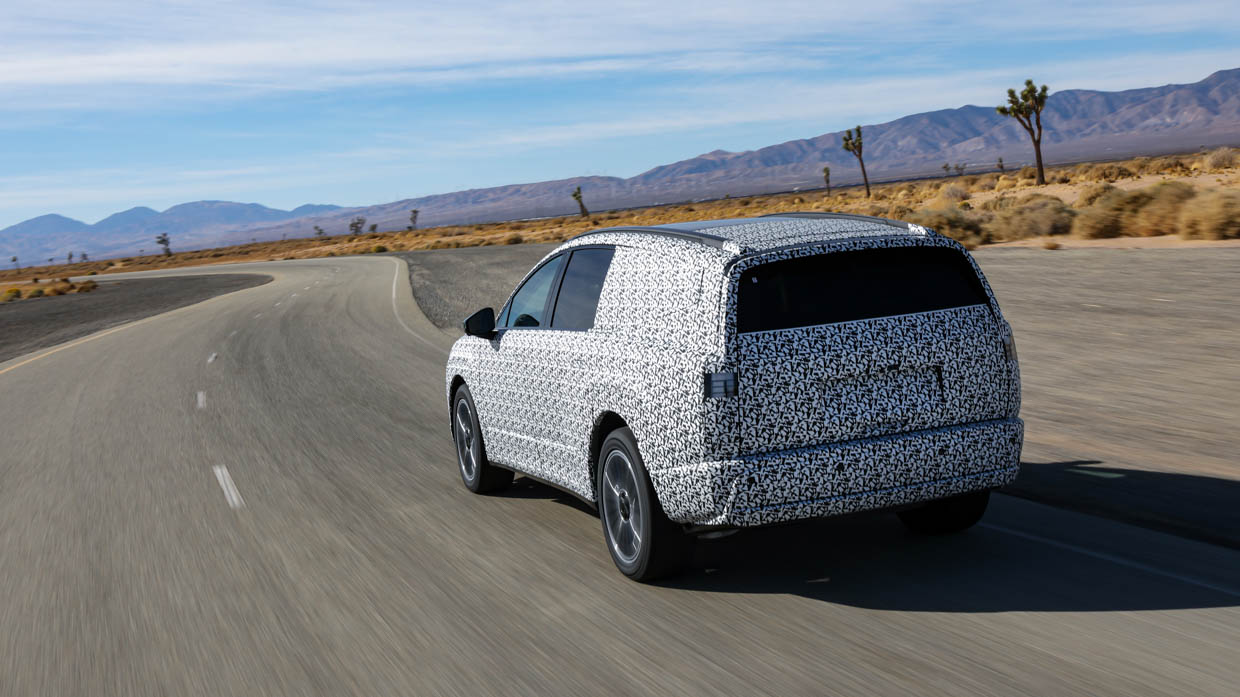
Indeed the same is also true of the standard dual motor version which doesn’t hang about, while the verdict on the rear-drive will have to wait until al local test.
Impressively, Hyundai has also tuned the suspension for outright comfort rather than corner-carving body control creating a beautiful match for the drivetrain options.
There was still some fun to be had at the company’s Mojave Desert proving ground, but the Ioniq 9 is a car for all occupants equally rather than just the one at the steering wheel.
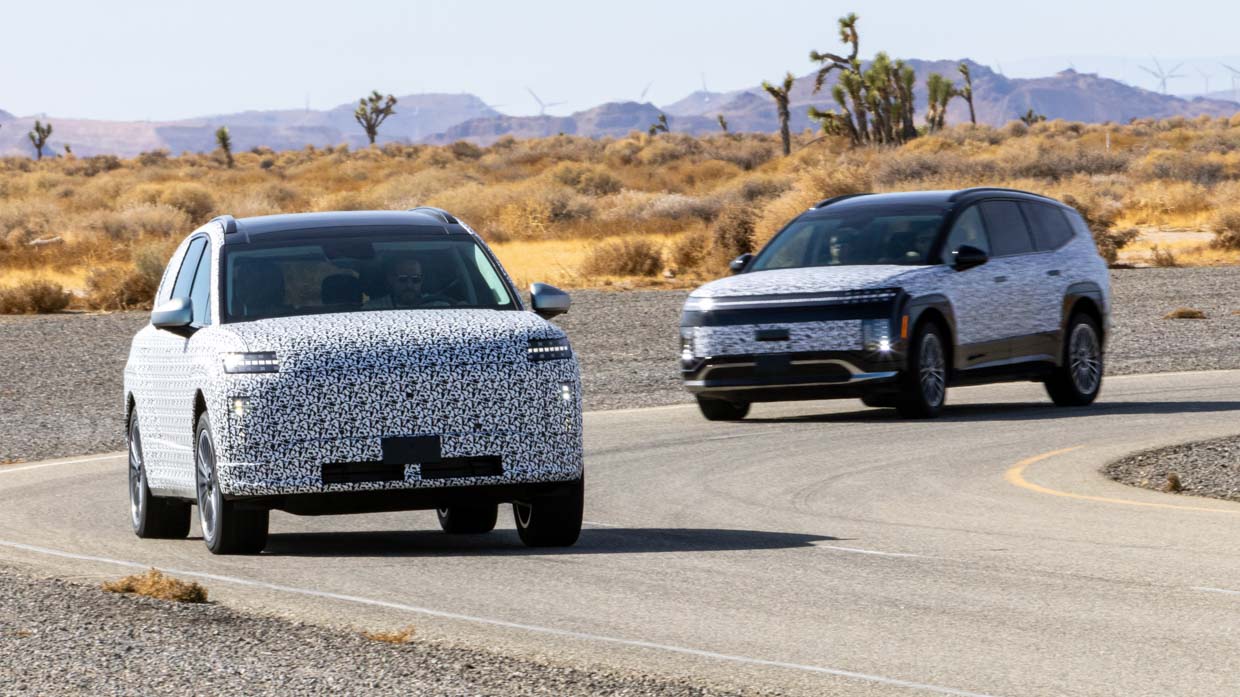
It’ll also confidently cut a lap of a high-speed ring as we also found out with in excess of 200km/h popping up impressively easily further demonstrating the minimal air resistance for a vehicle of this type.
Wind noise was also accordingly low along with minimal tyre roar highlighting the work that’s been done with double glazing, acoustic windscreen glass and the general NVH isolation common to the E-GMP platform which the Ioniq models ride on.
There are still a few ‘quality and design TBC’ items on our list but it’s of little use picking the Ioniq 9 to pieces until we’ve driven the final production spec cars that weren’t on offer in California.
With space and practicality high on the Ioniq 9’s list of reasons for being, there are numerous flexible seating choices depending on the level of specification such as swivel chairs for a camper van or diner table feel.
Once the second row seats have been rotated to face the rear, the air conditioning can be switched to only serve the rear part of the cabin saving energy. Exact Australian specification and options including some of the camper features are yet to be finalised however.
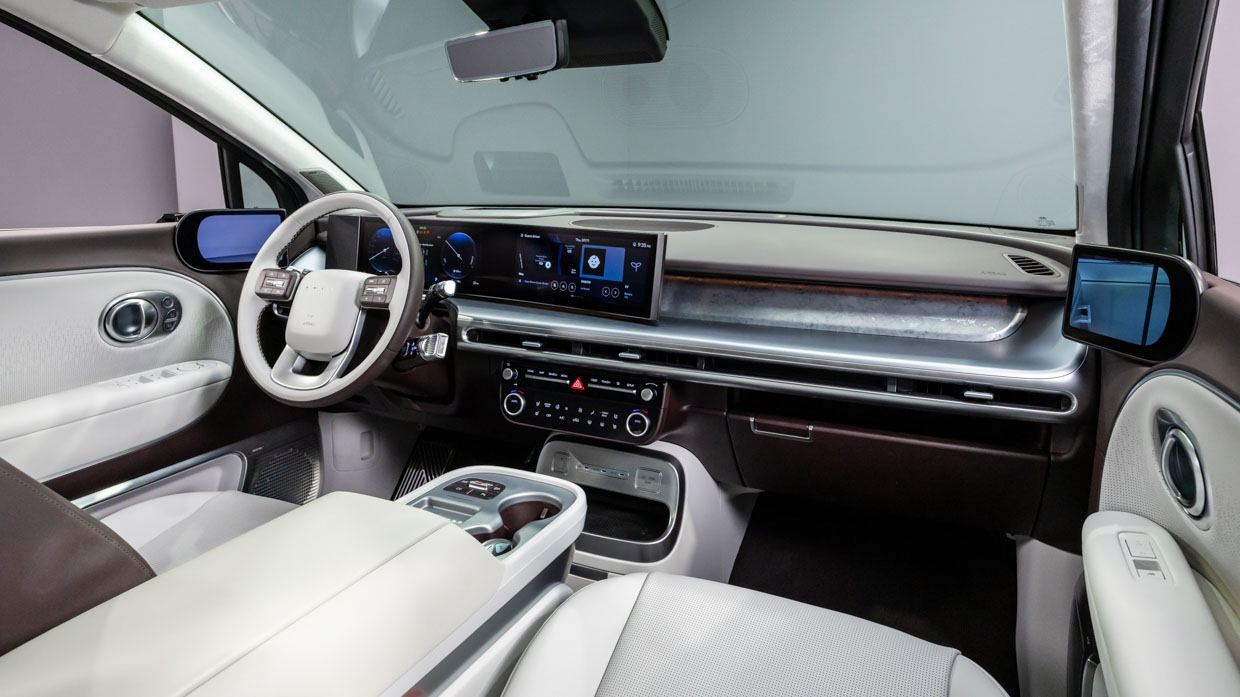
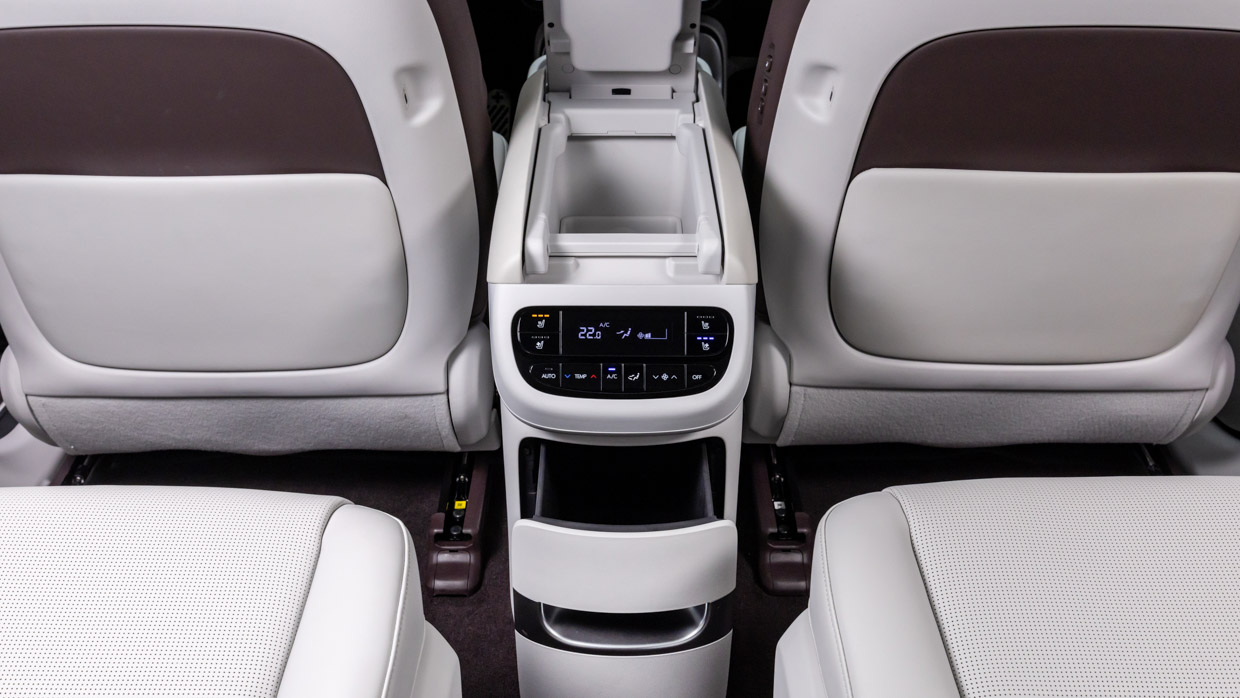
A central storage island is also moveable allowing more space in the front or second row but also offers more than 12 litres of storage in itself, while a similar unit between the second-row seats allows walk-though to the third row when the optional captain’s chairs are fitted.
A completely flat floor boosts both the useable space inside the Ioniq 9 as well as increasing the sense of space along with bright interior tones and a panoramic sunroof.
Depending on the global region, Hyundai also offers fully reclining second row seats and a Dynamic Body Care system which is a long way from early seat massage functions, using pressure and vibration to stimulate blood flow and reduce fatigue, it says. It certainly felt nice.

In practice, the Ioniq 9’s cabin feels big. In some areas it’s on a level with a Santa Fe while in others it feels more spacious if never quite matching the Palisade for outright volume – although Hyundai hasn’t released specific interior dimensions for comparison just yet.
That said, with various interior orientations, customers can enjoy the 980-litre boot when the third row is folded which is the same regardless of the drivetrain, while a compartment under the bonnet offers another 88 litres of storage for the rear-drive or 52 litres for the AWD pair.
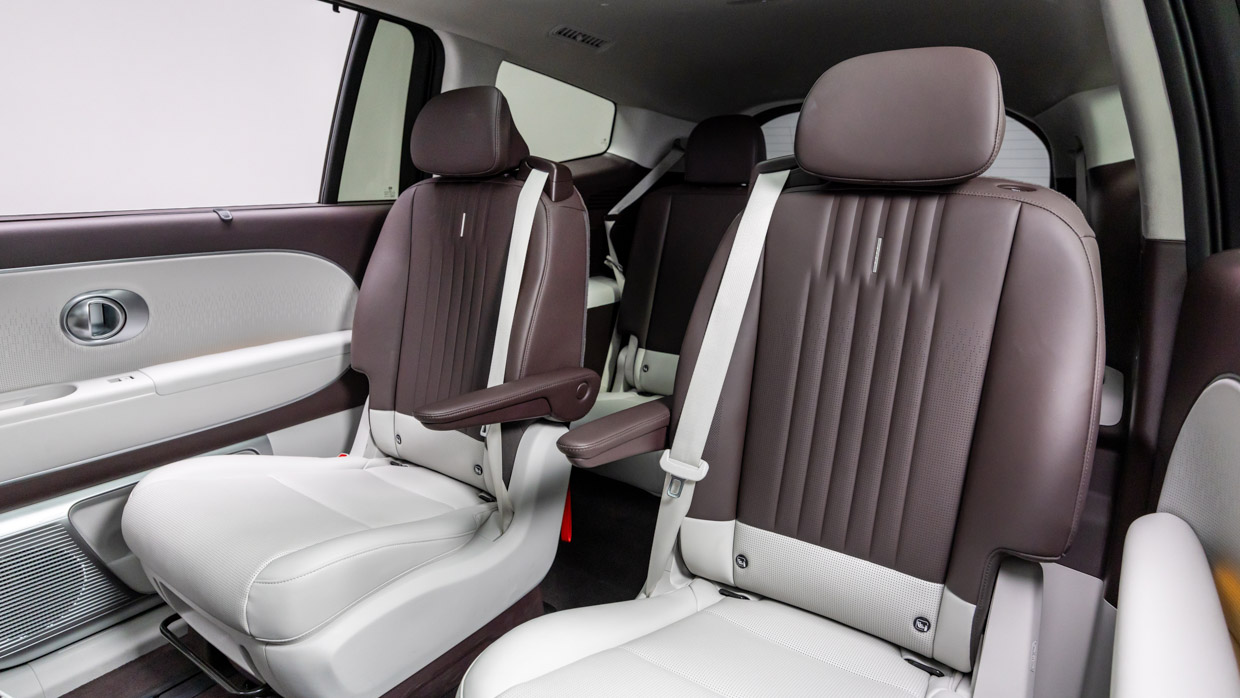

With all seats in place there’s still a 338-litre boot at the back while the cabin can expand to more than 1300 litres for maximum van volume.
Occupants in the third row are not made to feel like second-rate passengers with lots of comfort features in the back stalls including 100-watt USB-C charging sockets. That’s not a typo – the Ioniq’s device chargers are tapped directly into the drive battery electrics rather than a 12-volt sub-system to offer enough power to charge laptops, for example.

All three rows have a pair of the high-power outlets, while the Ioniq 9 also offers vehicle-to-load (V2L) power enabling the owner to feed the battery into auxiliary equipment and other power consumers such as when camping or during power outages.
Again, sorry for sounding like a scratched CD, but this too is awaiting exact confirmation locally.
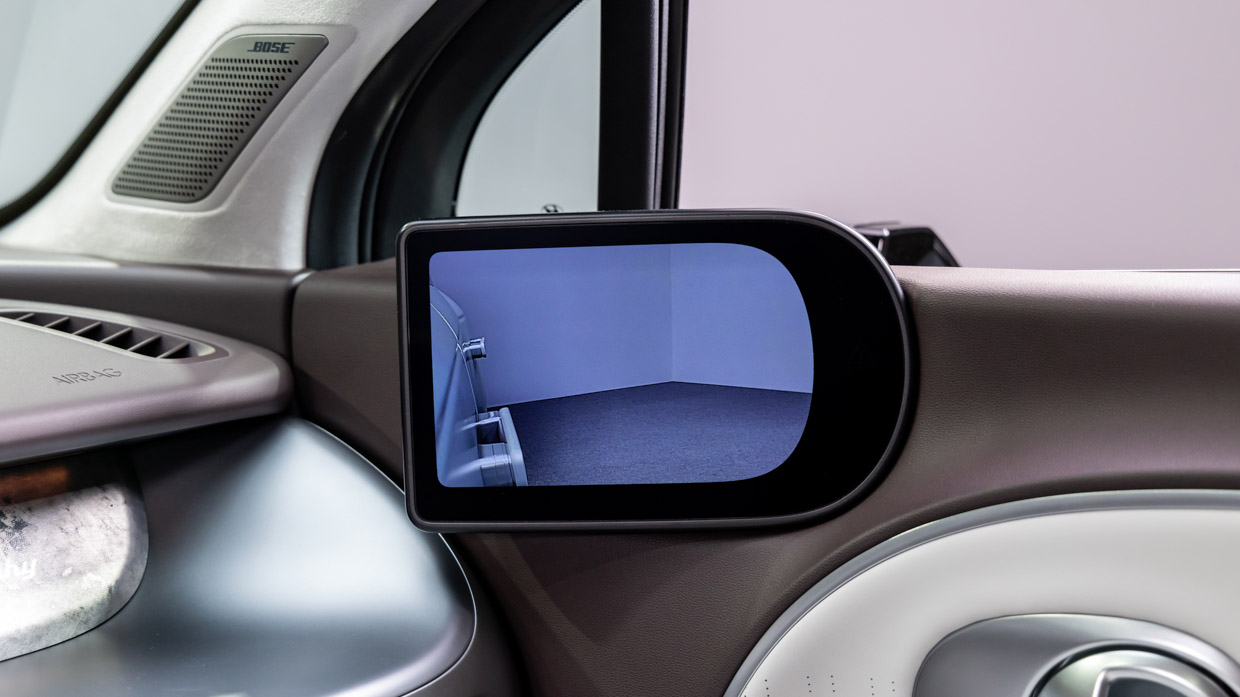
Options include the replacement of traditional glass side mirrors with cameras that relay images from each side of the vehicle to a 7.0-inch organic LED screen at either end of the dash board, a UV-C sterilising compartment similar to that seen in the Hyundai Santa Fe, Digital Key, and real-time road hazard alerts.
Standard technology includes the beautiful 12-inch curved driver’s instrument cluster that’s fused to another screen of the same size for a impressive visual and practical centrepiece.
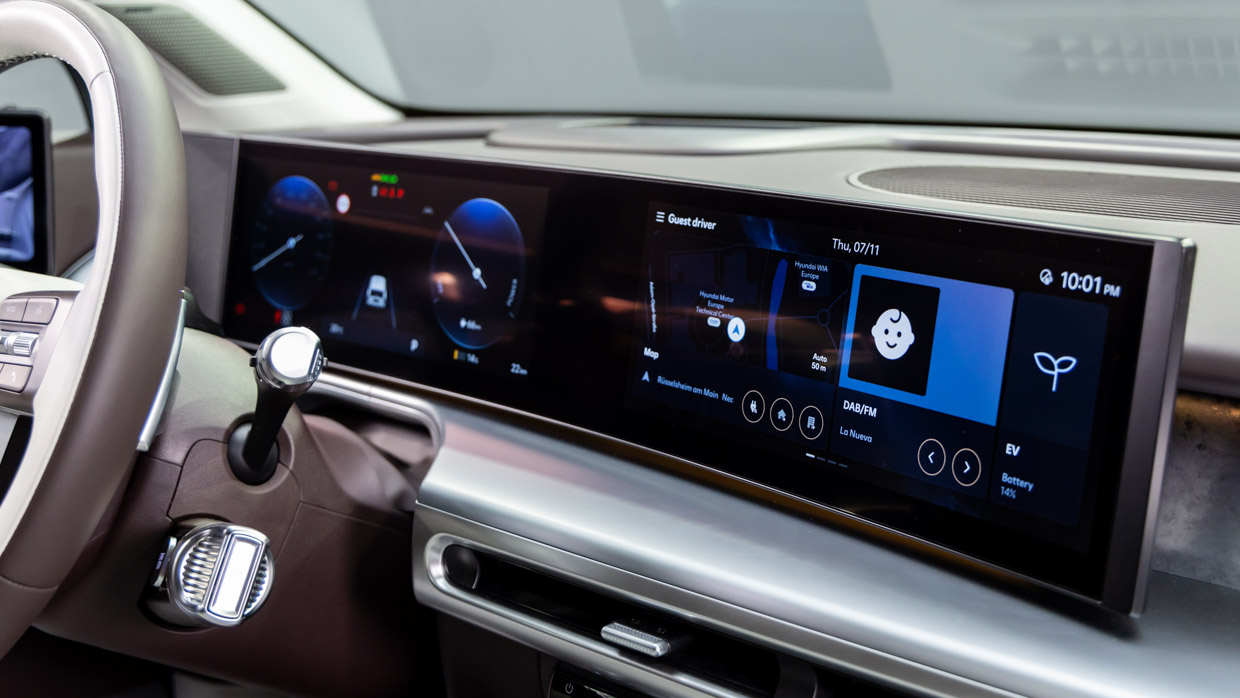
Only a few underwhelming materials detract from the interior quality feel with a little too much of the mock aluminium finish, although final judgment should wait until exact specifications are confirmed for Australian cars.
We loved the choices of eco and sustainable upholstery and fabric finishes including wool, recycled PET (mostly drink bottle plastic) and synthetic suede and leather materials. You can also have an ecologically friendly leather if a fully vegan vehicle is not important.
The Ioniq 9 has curtain airbags that extend to all three rows while the rearmost seats also have seatbelt pretensioners offering a high grade of safety for all on board.
Ten airbags are also dotted about the cabin offering one of the highest tallies in the market, while other active and passive safety features are comprehensive.
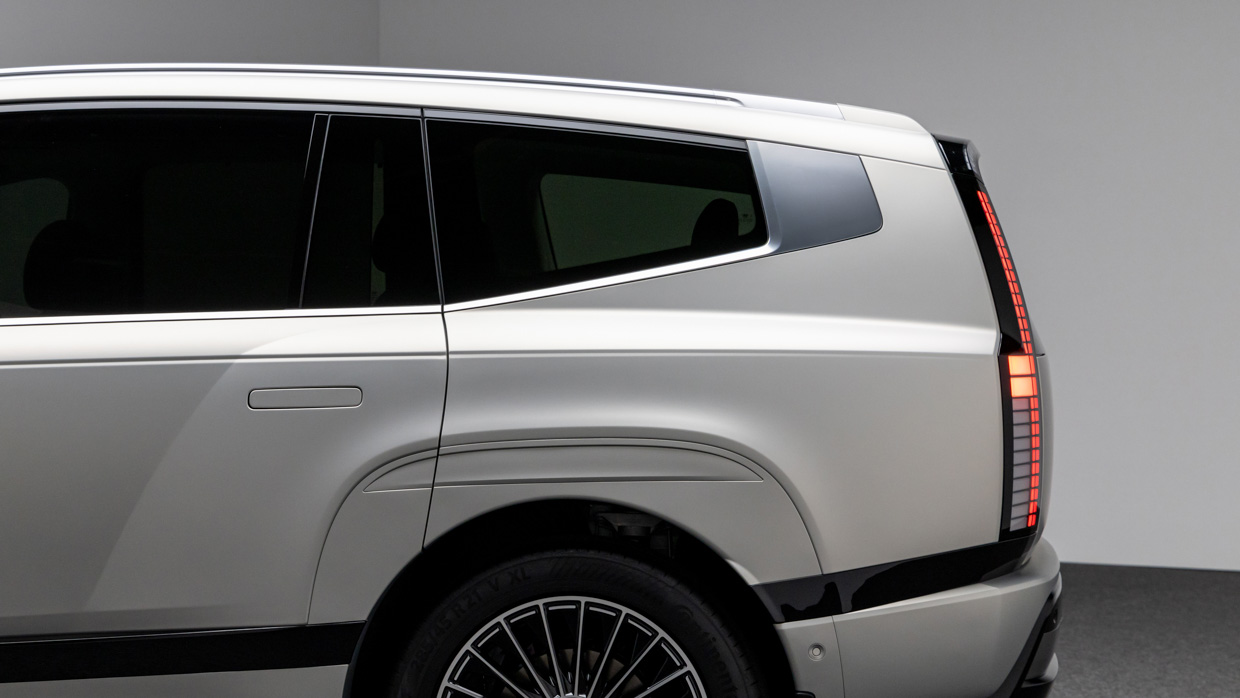
As standard there will be advanced AEB, lane-keep and steering assistance, blind-spot monitoring and assistance, vehicle exit warning, intelligent speed limit assistance, speed sign recognition, camera-based driver attention warning, rear-cross traffic assistance and all-LED lighting on the outside including Hyundai’s ultra cool Parametric Pixel designs.
The Australasian New Car Assessment Program (ANCAP) is yet to get its hands on the Ioniq 9 and forecast volumes will dictate if that happens at all once the model arrives in Australia. A Euro NCAP test is more likely so watch that space.
Beauty is in the eye of the beholder but for our cash, the Kia EV9 is definitely the looker in this large EV stable. That said, it would be a difficult decision choosing the prettier Kia over the more practical and longer-range Ioniq.
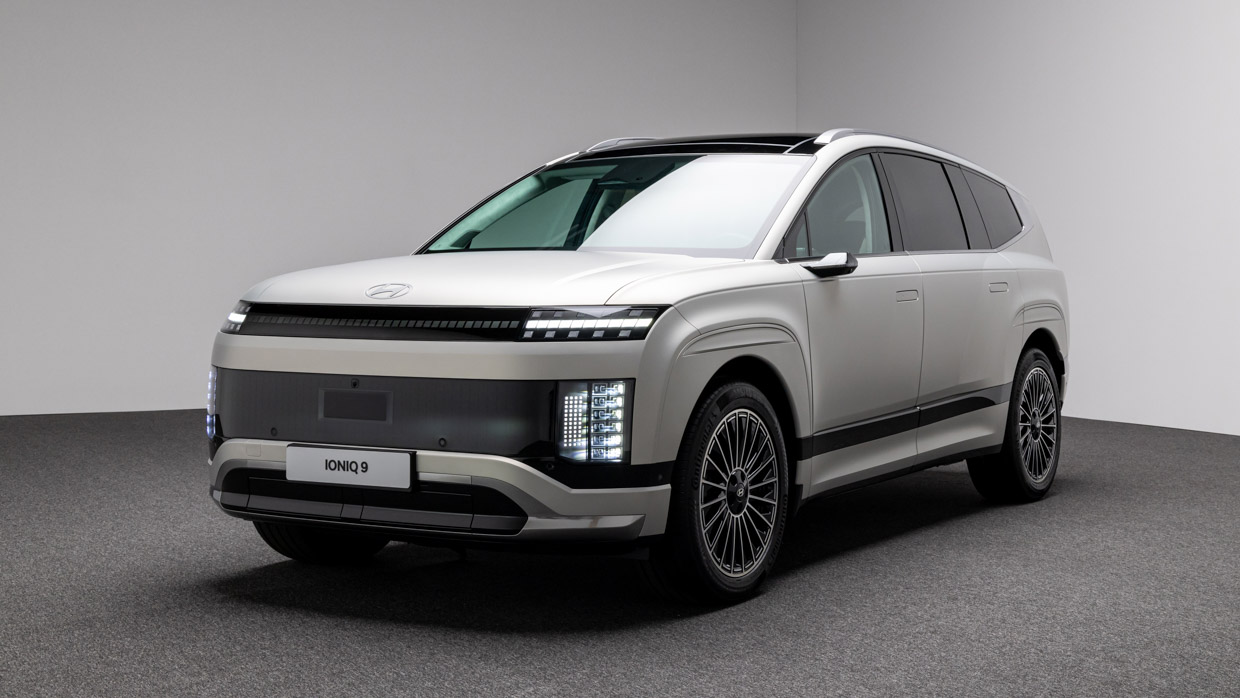
In this particular segment however, pragmatism is normally a more powerful determining factor than passion and that’s why the Ioniq 9 brings a compelling value proposition.
If it can match or at least get close to the Kia’s $97,000 starting price when it arrives next year it’ll offer one of the most feature packed and practical EVs on the market – not just in the segment – but of all.
About Chasing cars
Chasing Cars reviews are 100% independent.
Because we are powered by Budget Direct Insurance, we don’t receive advertising or sales revenue from car manufacturers.
We’re truly independent – giving you Australia’s best car reviews.
The estimate provided does not take into account your personal circumstances but is intended to give a general indication of the cost of insurance, in order to obtain a complete quote, please visit www.budgetdirect.com.au. Estimate includes 15%^ online discount.
^Conditions Apply
Budget Direct Insurance arranged by Auto & General Services Pty Ltd ACN 003 617 909(AGS) AFSL 241 411, for and on behalf of the insurer, Auto & General Insurance Company Limited(ABN 42 111 586 353, AFSL 285 571).Because we don’t know your financial needs, we can’t advise you if this insurance will suit you. You should consider your needs and the Product Disclosure Statement before making a decision to buy insurance. Terms and conditions apply.
Indicative quote based on assumptions including postcode , 40 year old male with no offences, licence suspensions or claims in the last 5 years, a NCD Rating 1 and no younger drivers listed. White car, driven up to 10,000kms a year, unfinanced, with no modifications, factory options and/or non-standard accessories, private use only and garaged at night.
^Online Discounts Terms & Conditions
1. Discounts apply to the premium paid for a new Budget Direct Gold Comprehensive Car Insurance, Third Party Property Only or Third Party Property, Fire & Theft Insurance policy initiated online on or after 29 March 2017. Discounts do not apply to optional Roadside Assistance.
2. Discounts do not apply to any renewal offer of insurance.
3. Discounts only apply to the insurance portion of the premium. Discounts are applied before government charges, taxes, levies and fees, including instalment processing fees (as applicable). The full extent of discounts may therefore be impacted.
4. We reserve the right to change the offer without notice.